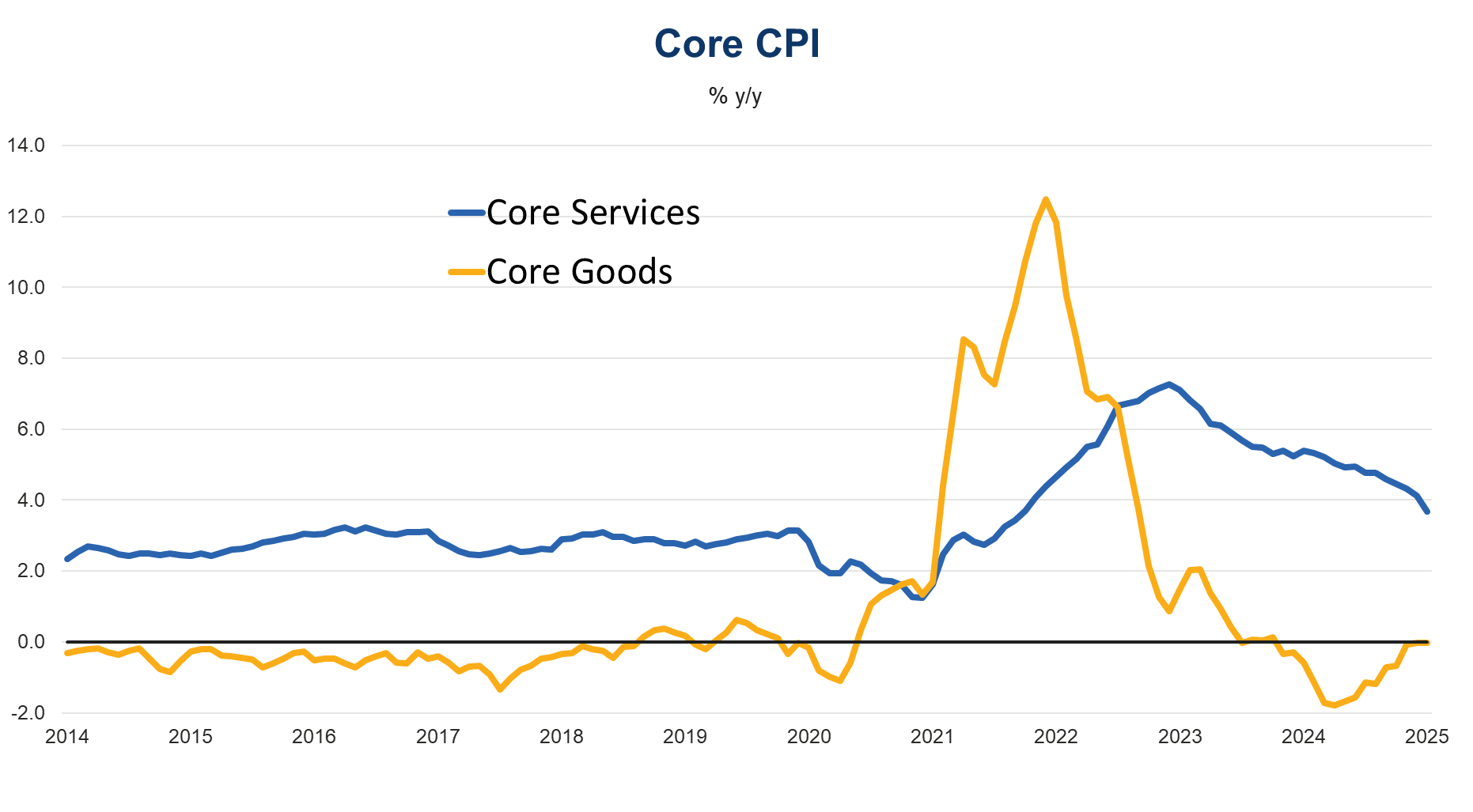
March CPI might have provided a hint of what to expect in the coming months as a broader set of tariffs impact the economy. Rising goods prices may limit discretionary spending. In March, potentially some initial pass-through of tariffs on imports from China into apparel and furniture prices were offset by sharp declines in discretionary travel-related services prices.
Figure 1. Service Price Growth Slows

Sources: Bureau of Labor Statistics, Haver Analytics, The Conference Board.
Uncertainty with respect to what extent tariffs will impact inflation suggests the Fed will likely remain on hold in the coming months, but may cut interest rate later this year as demand slows and the labor market deteriorates.
Rising prices in Q2 and Q3 will likely weigh on demand. Reduced spending will likely lead companies to cut prices, which will limit the rise in inflation later this year.
We project both Headline and Core PCE inflation, which CPI feeds into, to stabilize at around 3% y/y going into 2026. The Conference Board estimates tariffs may substantially lower GDP growth and raise inflation.
Figure 2. Goods Prices Dec

myTCB® Members get exclusive access to webcasts, publications, data and analysis, plus discounts to events.
FOMC Decision: Do Three Dissents Mean a January Pause?
December 10, 2025
Fed December Decision: Not So Clear Cut
December 09, 2025
September Inflation Pause Bodes Well for Fed Cut
December 05, 2025
September Retail Sales Show Consumers Taking a Breather
November 25, 2025
New Truce Offers Stability after US–China Trade Plummeted in 2025
November 05, 2025
Fed Signals It May Need to Pause
October 29, 2025
